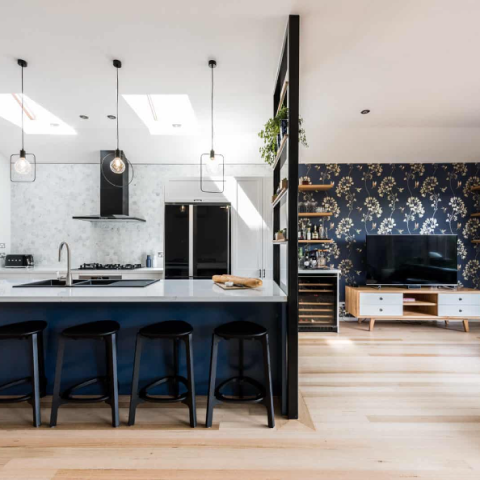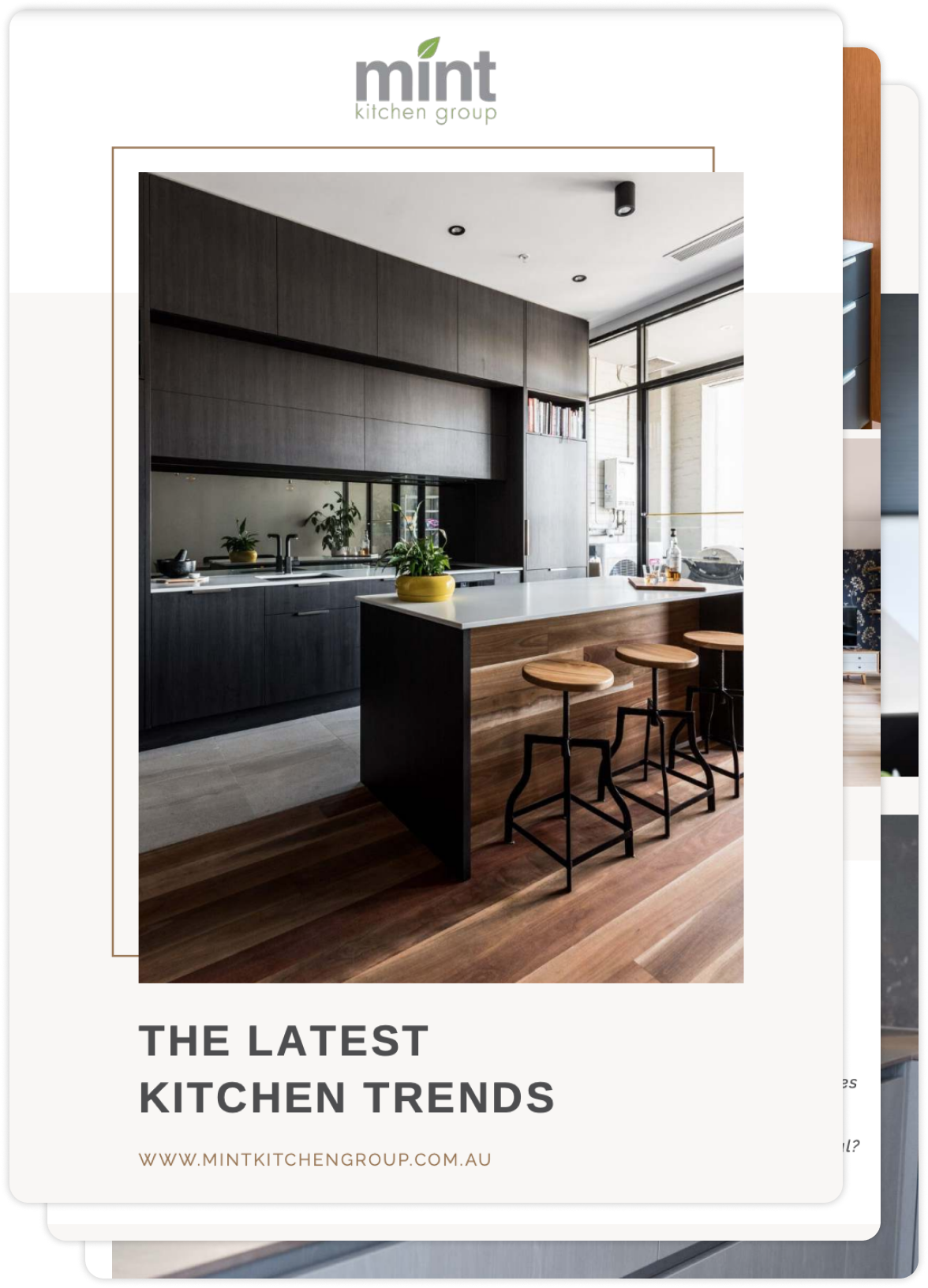The kitchen is our favourite room and our specialist designers love creating spaces where culinary creativity and daily nourishment converge.
Ergonomic design is a major component in any design course and we’re happy to say that homeowners have embraced the idea of focussing on ergonomics as an essential part of a kitchen layout. Ergonomics, the science of creating environments that adapt to human needs, has proven to be a game-changer in enhancing comfort, efficiency, and overall well-being in the kitchen. Today, we will delve into the myriad benefits of ergonomic design and how it transforms the kitchen into a more user-friendly and enjoyable space.
Optimised Workflow
Ergonomic kitchen design is all about optimising your workflow to make cooking and meal preparation seamless and efficient. A well-designed kitchen considers the natural flow of tasks, ensuring that essential elements such as the stove, sink, and refrigerator are strategically placed in a logical sequence. This reduces unnecessary movements, minimising fatigue and maximising productivity. By organising the kitchen layout based on the principles of ergonomics, individuals can move effortlessly from one task to another, ultimately saving time and energy.
Reduced Physical Strain
One of the primary goals of ergonomic kitchen design is to reduce physical strain on the body, especially during repetitive tasks. By incorporating adjustable countertops, cabinets, and appliances at the right height, users can maintain a more natural and comfortable posture. This helps in preventing backaches, muscle strains, and other musculoskeletal issues that may arise from prolonged periods of standing, chopping, or washing dishes. Ergonomic kitchen design aims to create a harmonious environment that supports the body’s natural movements, promoting long-term health and well-being.

Accessible Storage Solutions
Ergonomic kitchen design places a strong emphasis on accessible storage solutions, ensuring that often-used items are within reach and easy to locate. Pull-out shelves, lazy Susans, and vertical pull-outs are just a few examples of storage solutions that optimise space and make it easier for users to access pots, pans, utensils, and ingredients. This not only enhances convenience but also eliminates the need for excessive bending or reaching, reducing the risk of accidents and strain.
User-Friendly Appliances and Fixtures
Incorporating user-friendly appliances and fixtures is a key component of ergonomic kitchen design. Modern kitchen appliances with intuitive controls, touch-sensitive faucets, and smart lighting systems all contribute to a seamless and enjoyable cooking experience. These features not only enhance the overall functionality of the kitchen but also cater to users of all ages and abilities. From touch-operated ovens to adjustable-height sinks, ergonomic design ensures that the kitchen remains an inclusive space for everyone.
Enhanced Safety Measures
Safety is paramount in any kitchen, and ergonomic design plays a pivotal role in minimising potential hazards. Rounded countertop edges, non-slip flooring, and strategically placed lighting contribute to a safer environment. Additionally, ergonomic kitchen designs often incorporate features such as automatic shut-off mechanisms on stovetops and ovens, reducing the risk of accidents caused by forgetfulness or distractions. By prioritising safety through thoughtful design, homeowners can enjoy peace of mind while working in the kitchen.

Adaptability for All Ages and Abilities
Ergonomic kitchen design is inherently adaptable, catering to individuals of all ages and abilities. Features such as adjustable countertops and pull-down shelves accommodate varying heights and mobility levels. This adaptability is especially crucial in multigenerational households, where the kitchen serves as a communal space for family members with diverse needs. An ergonomically designed kitchen ensures that everyone, from children to seniors, can participate comfortably in daily culinary activities.
Stylish Aesthetics with Functional Purpose
Contrary to the misconception that ergonomic design sacrifices style for functionality, in the hands of an expert design professional, modern kitchens prove that the two can coexist harmoniously. Ergonomically designed kitchens showcase a seamless integration of style and functionality, incorporating sleek and contemporary aesthetics without compromising on practicality. From minimalist cabinetry to innovative storage solutions, these kitchens exemplify that a visually appealing space can also be highly efficient and user-friendly.

Improved Mental Well-being
A well-designed kitchen has the power to positively impact mental well-being. The streamlined organisation and reduced physical strain contribute to a stress-free cooking environment which means more members of the household are more likely to contribute or assist with cooking activities. Ergonomic kitchens often feature ample natural light, fostering a bright and inviting atmosphere. By creating a space that is both efficient and pleasant, ergonomic design promotes a sense of calmness and satisfaction, turning everyday cooking tasks into enjoyable experiences.
Energy Efficiency
Ergonomic kitchen design extends beyond the immediate user experience to encompass environmental considerations. Energy-efficient appliances, proper insulation, and smart lighting systems contribute to a sustainable kitchen that minimises its ecological footprint. By incorporating eco-friendly practices into the design, homeowners can enjoy the benefits of a kitchen that aligns with their values of conservation and sustainability.
The benefits of ergonomic design in the kitchen are far-reaching, encompassing physical health, efficiency, safety, and overall well-being. As the hub of household activity, the kitchen deserves careful consideration in its layout and design to enhance the quality of daily life.
At Mint Kitchen Group, we believe that embracing ergonomic principles allows our clients to transform their kitchens into spaces that not only look stylish but also prioritise comfort, functionality, and the joy of cooking. As the trend towards ergonomic design continues to gain momentum, we will continue to invest in our ongoing professional development to stay ahead of the trends relating to ergonomic design principles. The future will see the kitchen evolve into a space that adapts to the needs of its users, promoting a healthier and more enjoyable cooking experience.
If your kitchen is in need of some Mint Kitchen Group magic, drop into one of our four Melbourne showrooms today for an appointment with one of our specialist designers. Let us show you how your kitchen can be transformed into a blissful haven of culinary design.





Leave a Reply